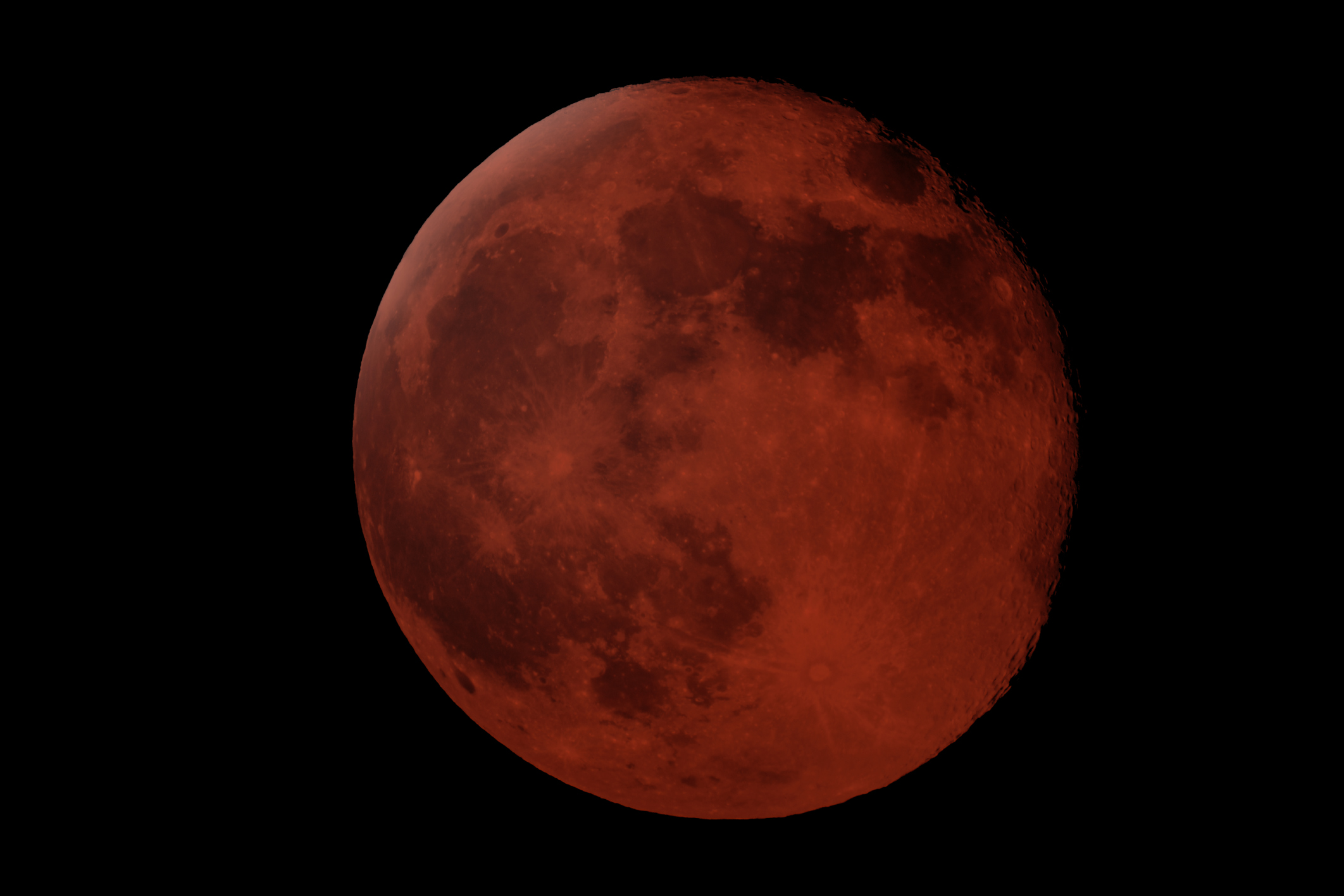
September 26, 2015, by Lindsay Brooke
Blood Moon – Astronomy or Astrology?
This blog has been written by Michael Merrifield, Professor of Astronomy in the School of Physics and Astronomy at The University of Nottingham.
One of the minor irritation in every astronomer’s life is in being introduced occasionally as an astrologer. In fact, there really shouldn’t be much confusion, as professional astrologers are far better paid than professional astronomers, so can easily be distinguished by their sports cars and designer clothes.
But a phenomenon this month, the “Blood Moon,” which occurs on the night of 27 – 28 September, provides a further nice illustration of the difference. The astronomical phenomenon here is that there is a total eclipse of the Moon – that is, the Earth will lie between the Sun and the Moon, thus blocking out most of the light that would usually illuminate the lunar surface. A little “leaks” round the limb of the Earth, bent in its path by the atmosphere, so there is still some illumination, but because the light that gets round has passed through a lot of atmosphere, most of the blue component is scattered away leaving only the reddish part of the sunlight (this is why sunsets appear red). So, the Moon will be illuminated by an eerie faint reddish light.
So far, so interesting, but, unfortunately, this isn’t what makes it a “Blood Moon.” That term has been coined for the specific case of a total eclipse of the Moon in a set of four, spread over two years, called a “lunar tetrad.” Since we have had such eclipses on 15 April and 8 October 2014 and 4 April 2015, this one completes the set. Why do they come in sets of four like this sometimes? Well, whether you get an eclipse or not depends on exactly where the moon is in its somewhat-inclined orbit when the Earth passes between it and the Sun – most times the Earth appears above or below the Sun from the Moon, but once in a while they happen to line up closely enough for the Earth to block out the light of the Sun. Since the Earth is much bigger than the Sun when viewed from the Moon, it isn’t as rare a phenomenon as a total Solar eclipse here on Earth, which really requires an exact alignment, but it does still require a certain amount of luck. And even more occasionally, you get very lucky and it happens four times in quick succession. But it really is just an orbital coincidence rather than anything of astrophysical significance.
This, however, doesn’t stop those of an astrological bent from getting excited about such sets of eclipses: search for “lunar tetrad astrology” on your favourite engine, and you will find many people happy to tell you what important impact this phenomenon will have on your life. In fact, the current popularity of the phrase “Blood Moon” is largely down to two American pastors, Mark Blitz and John Hagee, who wanted to go still further and claim that this set of lunar eclipses, which coincidentally coincide more-or-less with the feasts of Passover and Tabernacles, represents the fulfilment of Biblical prophecy and is an indicator of the end of the World. Amazingly, Mr Hagee has even written an entire best-selling book on the subject. Trust me, I’m an astronomer – the World is not going to begin ending this month.
I admit I will look pretty silly if I am wrong, but then fortunately no-one will be around to say “I told you so!” And when it doesn’t end, and your life continues much as usual without an unexpected encounter with a tall dark stranger, I hope you will have enjoyed the astronomical spectacle of the eclipse without getting too distracted by the surrounding coincidental astrological nonsense.
No comments yet, fill out a comment to be the first

Leave a Reply